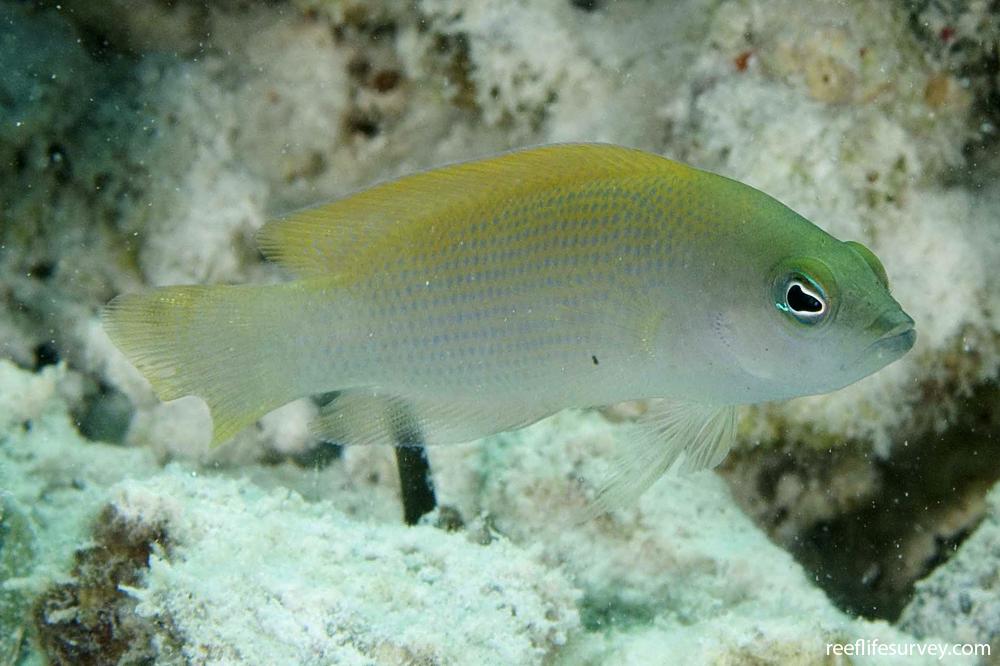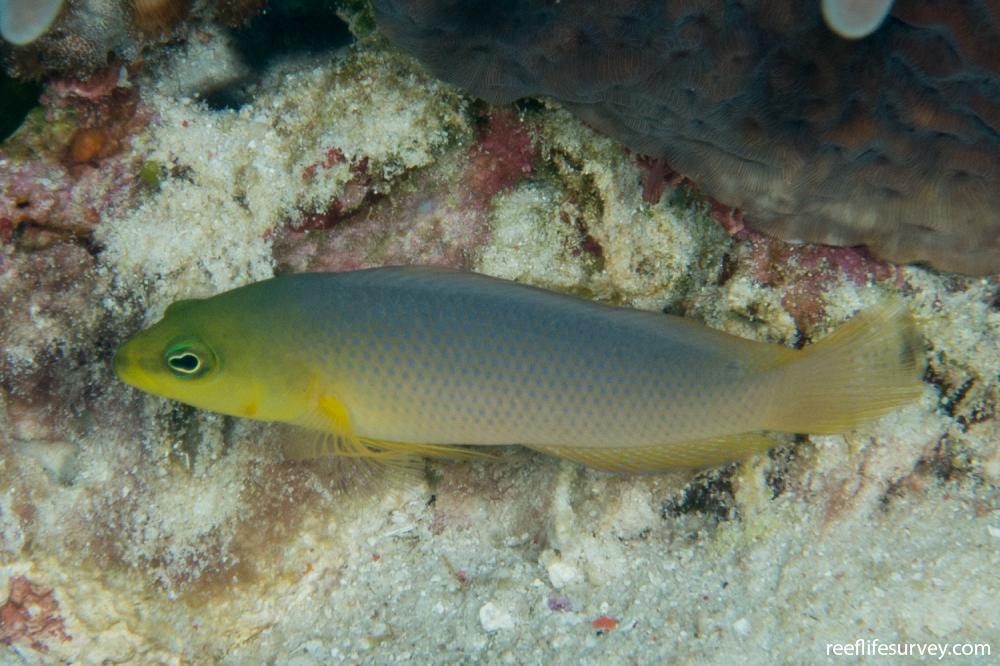Pseudochromis fuscus
Dusky Dottyback | Brown Dottyback | Golden DottybackSimilar Species
Same Genus
Distribution
Tropical Indo-Pacific
Description
Body base colour highly variable, but commonly yellow or dusky brown/grey and with blue edge to dorsal fin. Dark spots align in thin parallel rows down sides, but can be difficult to see in all-yellow individuals. P. marshallensis has light rather than dark dots along side, and tends to be smaller and shyer. Yellow individuals can look similar to Pomacentrus amboinensis (Ambon Damsel). Very common, but secretive.
Information
Max Size: 10 cm
Sea Temperature Range: 21.4-31.2°C
Depth: 2-30m
Habitat Generalization Index: 14.09
Also referred to as the SGI (Species Generalisation Index), this describes the habitat niche breadth of the species. Species with values less than 15 are found in a relatively narrow range of reef habitat types (specialists), while those over 25 may be found on most hard substrates within their range (generalists). Learn more here.
Conservation and Rarity
IUCN Status: Not Evaluated
Occurrence: Common (35.9% of sites)
Occurrence describes how often the species is found on surveys within its distribution. It is calculated as the % of reef sites surveyed by RLS divers across all the ecoregions in which the species has been observed
Abundance: Few (3 per transect)
Abundance is calculated as the average number of individuals recorded per RLS transect, where present.
Edit by: RD Stuart-Smith, GJ Edgar, AJ Green, IV Shaw. 2015. Tropical Marine Fishes of Australia. Reed New Holland























